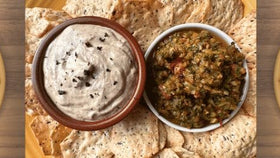What Is So Special About Madagascar Vanilla?
Are Madagascar vanilla beans really so special? If you’ve ever perused the spice and baking aisles at your favorite grocery store, frequent a specialty spice shop, or spend any amount of time looking at online ingredients, you’ve most certainly come across Madagascar Vanilla Beans. Menus and products boast specific vanilla bean origins as means of marketing their greatness, but what is it that positions Madagascar vanilla beans as the epitome of vanilla superiority?
Why Are Madagascar Vanilla Beans Considered, “The Best Of The Best”?
Madagascar has become synonymous with quality, in terms of vanilla beans, extracts, pastes, and more. There are numerous other vanilla bean varieties, like Tahitian vanilla or Pompona vanilla however, and just as is the case with wines, chocolates, and teas, “best” is dependent on purpose and preference of the end user. If eighty percent of the worlds supply of vanilla beans comes from Madagascar, one could theoretically say eight out of ten people prefer Madagascar vanilla beans possibly making these vanilla beans the best in the world in many respects.
Let’s take a look at the reasons why vanilla beans donning the Madagascar name have solidified fame in the culinary, wellness, and aroma-based markets.
The Flavor of Madagascar Vanilla
Every type of vanilla bean has its own unique combination of flavor components, but that recognizable vanilla flavoring agent that artificial substitutes are trying to replicate is owed to a natural chemical compound found in vanilla beans—vanillin. Nowadays, the vast majority of vanillin is produced synthetically, but true vanilla lovers are well aware of the fact that there is no replacement for that pure vanilla flavor from quality beans.
Madagascar vanilla beans boast extremely high levels of vanillin, which contributes that slight sweetness and comforting flavor that tricks our brains into believing we are ingesting something creamy and warm. These above-average concentrations of vanillin also add to the experienced richness in these beans, which is highly desired in the culinary community.
The Origin of Madagascar Vanilla Beans
Oddly enough, the world’s most famous vanilla bean variety isn’t even native to the country to which its namesake is owed. Madagascar vanilla beans are of the Planifolia orchid species. They are noted as the first vanilla bean, discovered in Mexico many centuries ago. They were such a prized ingredient that the plants were taken elsewhere to cultivate.
You may have heard Madagascar vanilla beans referred to as Bourbon vanilla. This is because Madagascar beans were first cultivated on an island that neighbors Madagascar prior to making their global debut, an island formerly named Île Bourbon. Now, the name, Madagascar vanilla, is associated with the vanilla species that grow even beyond Madagascar—Comoros, Tanzania, and Uganda, to name a few.
Why Do Madagascar Vanilla Beans Have Such High Levels of Vanillin?
The areas in which Bourbon vanilla beans are grown are highly conducive to producing vanilla orchids. Vanilla orchid vines thrive in tropical, hot, and humid weather. The rainfall in these regions is heavy and consistent and the soil is a fertile blend of sand, clay, and humus. Together, these factors present optimal growing conditions for an otherwise finicky plant. The beans are enabled to grow plump and, when harvested at the optimal time, produce a thick, moist bean that is practically bursting with rich vanillin content in every minuscule seed when in the hands of skilled vanilla processors like the those of the Malagasy.

The cultivation of vanilla in Madagascar is a labor-intensive process that relies heavily on traditional methods passed down through generations. Each vanilla orchid is hand-pollinated, a meticulous task that requires precision and expertise. After harvesting, the beans undergo a curing process that includes blanching, sweating, and sun-drying, all carefully monitored to develop the beans' complex flavor profile. This artisanal approach ensures the highest quality of vanilla beans from Madagascar that flavor so many foods worldwide with high level of vanillin 250 other flavor compounds that are unique to vanilla.







Slofoodgroup
Author